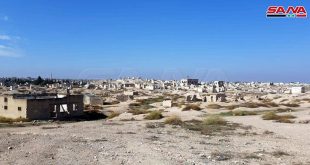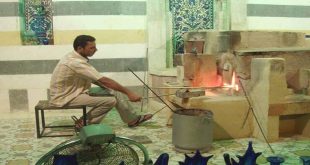Damascus, SANA – Archeological discoveries and historical documents from various eras show a persisting interest in astronomy among Syrians throughout the stages of history, going as far back as the Bronze Age, with astronomers developing new tools for studying the cosmos and improving them over time. The astrolabe is one such tool.
The astrolabe, which was invented by the ancient Greeks during the second century BC and whose name means “star-taker” in Greek, is a portable inclinometer (an instrument for measuring angles of slope, elevation or depression of an object with respect to gravity) which was used to assess the positions of the sun, moon, planets, and stars, in addition to keeping time and navigation
The Syrians were among the many people who developed this device, with one of the most famous makers of astrolabes being Damascene mathematicians and astronomer Abu al-Hasan Ala’al-Din Ali Ibn Ibrahim (1304-1375) who is better known as Ibn al-Shatir.
Ibn al-Shatir wrote three works on making and using astrolabes, and he is also known for constructing the polar-axis sundial of the Umayyad Mosque and who embraced the theory of heliocentrism, and may have been one of the influences on Nicolaus Copernicus’ work.
Syrian astrolabes are marked by simplicity of design and lack of complication, favoring the flat circular model rather than the spherical model or the ruler-line model. Among the more notable astrolabes discovered in Syrian include one made of copper and silver, made in Hama circa 1299, in addition to one dating back to the 15th century which was made of a copper-zinc-lead-tin alloy, and one made of brass dating back to the 18th century. The latter two are currently preserved in the National Museum in Damascus.
The astrolabe consists of several parts: first is the “mater” (mother) which houses one or more “tympans” which are discs on which there are engraved circles denoting azimuth and altitude, the 12 houses of the Zodiac, and other information (Islamic-era astrolabes, for example, denoted the times for prayers). The remaining parts are the “rete” which is a framework bearing a projection of the ecliptic plane, and several pointers indicating the positions of the brightest stars.
Hazem Sabbagh
 Syrian Arab News Agency S A N A
Syrian Arab News Agency S A N A





